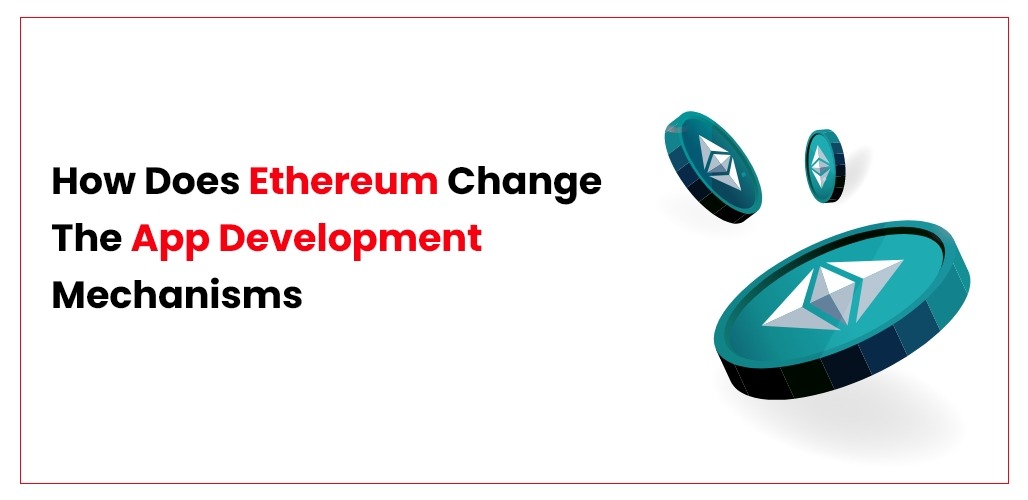If you now work in the banking or IT industries or just read the news, you’ve probably heard a lot about cryptocurrencies and how ethereum change the app development mechanisms. The introduction of Bitcoin and the subsequent adoption of numerous other currencies has swept the globe. We at AppVerticals have been working on a mobile application for a client to address some technical issues with the Ethereum blockchain, which has prompted us to dive headfirst into the cryptocurrency realm.
What is Ethereum?
Ethereum is a blockchain platform whose principal role is to store and run smart contracts, which are transactional programs inscribed into the blockchain. Ethereum is a ledger for Ether (ETH), its native cryptocurrency. The network facilitates the production of new crypto coins and the development of decentralized applications (d-apps) because it can execute smart contracts.
Blockchain researcher Vitalik Buterin, who created Ethereum, first outlined his blockchain concept in a 2013 whitepaper. Numerous others with like minds were drawn to Vitalik’s concept and helped him construct Ethereum. Together, they made the project’s public announcement in January 2014, and that same year, it was successfully crowdfunded.
What is Ether?
The second main way Ethereum adds value to its blockchain network is through the token economy and system-wide application of Ether currency. A technology called the Ethereum blockchain is designed to act as a decentralized app store. A mechanism must be found for this kind of network platform to provide the computational resources needed to run a program or an app across the network. Ether is valuable in the system because of this. Any decentralized applications running on the Ethereum network must spend Ether to execute blockchain transactions. Ether is in high demand because it powers many blockchain-based applications and enterprises.
What is Blockchain?
A network of computers known as a blockchain is used to store the system’s current state. Each node (computer) in the system must concur on the change before it can be implemented. Its consensus process refers to how a particular blockchain decides on updates and the status of the system right now. Computer networks can cooperate using these technologies while remaining safe from malicious users.
How consensus mechanisms work
Ethereum currently employs a proof-of-work (PoW) mechanism, which requires any node wishing to modify the blockchain to first solve a difficult puzzle. Solving the puzzle demonstrates that you have invested the resources required to make the change because these riddles need a lot of processing power. Due to the significant resources required to construct the block, this discourages malicious nodes from attempting to submit false blocks.
Decentralized App
Decentralization, which refers to the notion that a single body does not own the system, is one of the fundamental ideas behind the Ethereum network. You only need an internet connection to begin buying and trading ETH. You never have to submit any personal information, and all transactions are based on your wallet address (a random string generated when you created your wallet). As a result, the system cannot discriminate against or pick and choose who can open an account or transmit transactions. Additionally, since both Ethereum and its apps are open sources, anybody can view the code that powers the platform.
In contrast to applications like Facebook or Instagram, whose backends are under the authority of those companies, this means that the network on which it operates is autonomous and not under the control of any one company.
Most consumers who download apps from the App Store on an iPhone or Android are familiar with traditional programs. Users can utilize apps to perform specialized tasks like checking bank account balances, browsing friends’ photos on a news feed, or even playing their preferred card game. Dapps adhere to the same principle. In contrast to a centralized organisation, it operates on a platform backed by a network of nodes. This offers several advantages and benefits over our current apps.
Tamper Proof
Ethereum benefits from the characteristics of blockchain technology, making it impervious to interference from outside parties. Dapps can be installed on the network without fear of a malicious outsider seizing control. Furthermore, because the blockchain is based on the consensus principle, every node and user of the network must consent to every modification before it can be put into practice. This lessens the likelihood of fraud and network corruption.
Decentralized
Decentralization, a fundamental principle of the blockchain, is also present in the Ethereum platform. The network has no single point of failure; hence none of the network’s hosted apps ever experience downtime or failure. Additionally, this has security ramifications that defend the network from potential hacking efforts.
Open Source:
The front and back end of the dapp’s source code are accessible to users. This indicates that there isn’t any code “hiding under the hood” executing additional tasks that might not be useful to the user.
No Downtime:
Since dapps are supported by a distributed network of nodes that maintains the blockchain, there isn’t a single point of failure that can bring the whole thing to a halt. This reduces the likelihood of system failures and crashes because the application’s service is constantly active and working.
Easy To Implement:
Developers can save time and money by using Dapps developed on the Ethereum blockchain rather than starting from scratch. Instead, the Ethereum protocol makes the framework possible and aids developers when they are trying to design a new application by saving them valuable time and effort. The dapps then directly pay the network transaction fees in Ether to access the decentralized network of Ethereum.
Conclusion
A key blockchain platform Ethereum has paved the way for a lot of innovation in the bitcoin industry. The Bitcoin concept was expanded upon by Vitalik and his team for a wide range of additional use cases. Other blockchains are now attempting to build on Ethereum’s success and raise the value of their application-building protocol after realizing the issues with the Ethereum platform.
However, Ethereum’s restrictions are well known. The marketplace is crowded with rival businesses. The Ethereum development team is working hard to hold onto its apex position, and for the time being. They continue to dominate the market for new applications. The good news for the blockchain sector is that innovation is happening everywhere. Ethereum serves as a terrific launching pad for new platforms and apps. Ethereum’s best days are definitely behind it.
Credits: AppVerticals Android Applications Development Company








